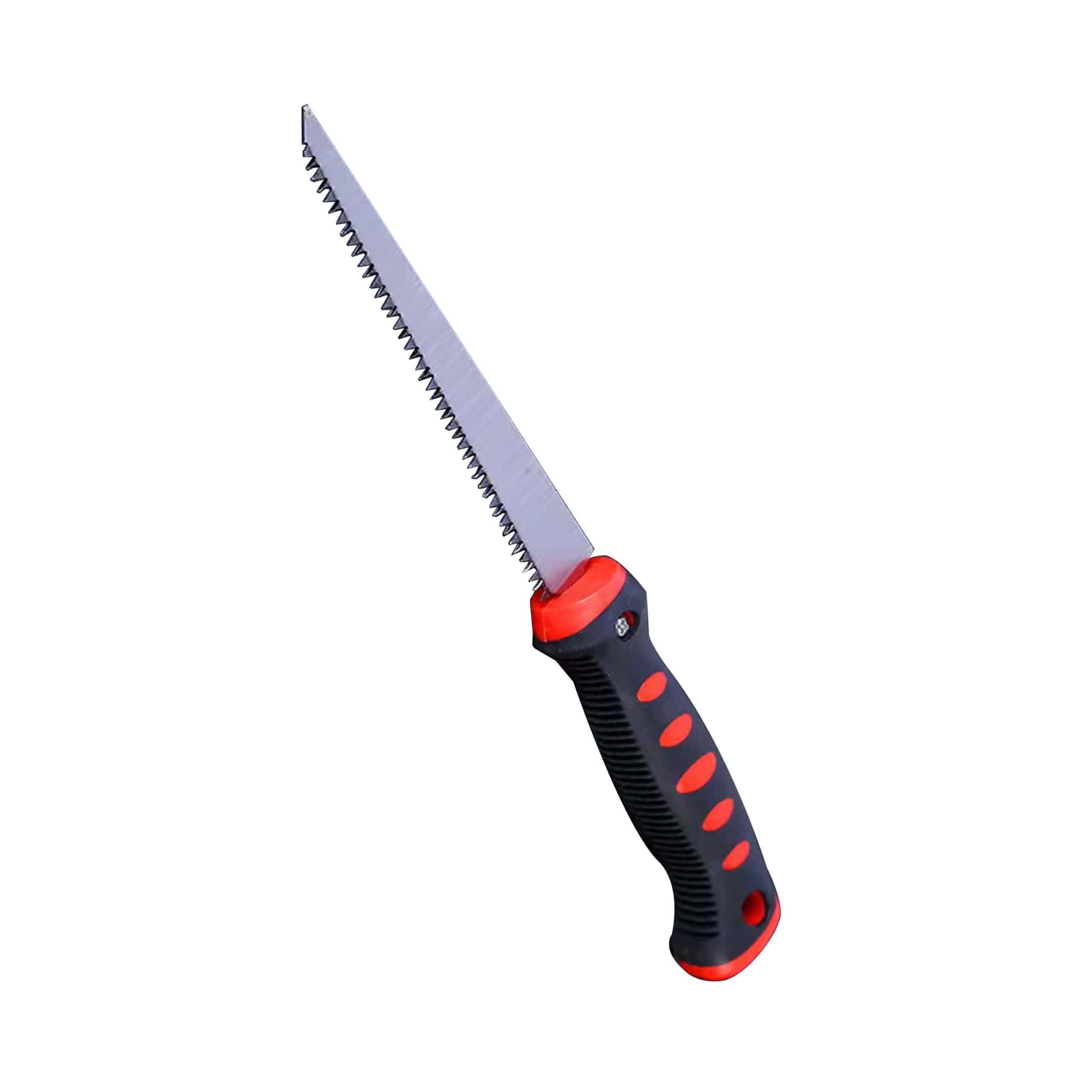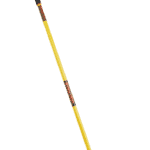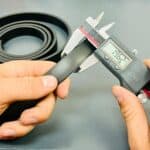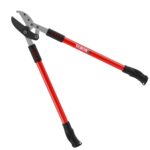A drywall saw is an important tool for anyone working with drywall. It is used for cutting drywall, making holes for outlets, and shaping small sections. This saw has a pointed, serrated blade, and a lightweight handle, which makes it easy to control and use.
When selecting a drywall saw, it’s important to think about the type of cut needed. A keyhole saw is great for straight cuts, while a spiral saw can handle more intricate shapes. For larger holes, power tools like a reciprocating saw are often best.
DIY enthusiasts and professionals alike will find many options at home improvement stores like Home Depot. With the right tools, cutting drywall becomes a much simpler task. Excited to learn more? Dive into each type of saw and see which one fits your project best.
Understanding Drywall Saws
Drywall saws are specialized tools designed to cut drywall efficiently and accurately. They come in various types, each suited for different cutting tasks and offering unique benefits.
Types and Purposes
Different drywall saws serve specific purposes. For instance, a Jab Saw or Keyhole Saw has a pointed blade for cutting small holes. This type is ideal for making cutouts for outlets or switches. The Reciprocating Saw can cut through drywall quickly, making it great for large demolition projects.
A Spiral Saw is perfect for intricate cuts and circular shapes. It spins at high speeds to cut through drywall smoothly. An Oscillating Multi-Tool is versatile, ideal for tight spaces or detailed cuts. This tool can also cut various materials, not just drywall.
For neat round holes, a Hole Saw is your best bet. It attaches to a power drill and makes clean, precise holes. Rotary Saws offer control for detailed cuts and can handle various angles. Track Saws are less common but useful for long, straight lines. Handheld Drywall Saws are simple and easy for manual tasks, while a Utility Knife can score and snap drywall for straight cuts with minimal dust.
Selecting the Right Drywall Saw
Choosing the right drywall saw depends on the job. For straight cuts, a Circular Saw or Jigsaw might be the best. These tools can handle long, straight lines with ease. For tighter curves, a Handheld Drywall Saw or Keyhole Saw works well. They offer maneuverability for detailed cutting.
If the job requires speed, a Reciprocating Saw is very effective. It cuts fast and can go through several sheets quickly. For clean and precise cuts, a Hole Saw or Rotary Saw provides excellent results. Oscillating Multi-Tools are perfect for versatility, as they can handle various materials and cut types.
To ensure a smooth job, pick the saw based on the material, cut shape, and desired finish. Matching the correct tool with the task means cleaner cuts and easier work completion.
Practical Applications and Safety
A drywall saw is essential for accurate cuts in drywall. It is particularly useful for cutting around electrical boxes and outlets. Safety is also a priority when using this tool.
Installation and Repairs
A drywall saw is used to cut areas for installing electrical boxes, outlets, and light switches. When hanging drywall, precise cuts around obstacles are needed. This allows the drywall to fit properly.
When repairing drywall, a saw can cut out damaged areas. A new piece can then be fitted and secured with joint tape and drywall material.
A drywall saw is important for cutting around corners and edges. It can cut through drywall sheets and make holes for other fittings. It can be used on plywood as well.
Safety Measures During Use
Using a drywall saw requires certain safety steps. Safety goggles are important to protect eyes from dust and debris. Gloves can protect hands from injury.
A dust collection system or mask helps to keep the air clean. This is vital during long tasks to prevent inhaling particles.
In addition, keeping the workspace clear of obstacles is key. This prevents tripping while working. Proper grip on the tool prevents slips and helps in making accurate cuts.
Using these tools and taking precautions keep the worksite safe and efficient.
Frequently Asked Questions
Drywall saws are essential tools for specific tasks in construction. Their uses range from making small cuts to handling delicate shapes. Below are common questions about how these tools are used and their unique features.
How is a drywall saw utilized in construction projects?
A drywall saw is used to cut holes or shapes in drywall. People often use it to install outlets, switches, and light fixtures. The saw’s pointed tip allows it to pierce the drywall easily, making clean cuts without much effort.
Can a jab saw be effectively used on materials other than drywall?
Yes, a jab saw can cut through other materials. It works well on wood, plastic, and some thin metals. However, it may not be suitable for very thick or tough materials. Always check the saw’s specifications before using it on different materials.
What are the distinctive features of a keyhole saw compared to other saws?
A keyhole saw has a narrow, pointed blade. This makes it great for cutting small, precise holes. Other saws may have broader blades and are better for larger cuts. Keyhole saws offer control and precision, making them useful for detailed work.
In what scenarios is a coping saw preferable over a drywall saw?
A coping saw is better for intricate, curved cuts. It has a thin, flexible blade that can manoeuver around tight corners. Use it for tasks like cutting moldings or crafting detailed designs. It is not ideal for straight cuts in drywall.
What considerations should be made when choosing between an electric jab saw and a manual one for drywall tasks?
An electric jab saw offers speed and ease, especially for large projects. Manual jab saws provide more control and are safer for small tasks. Consider the project’s size and your comfort with power tools. Electric saws require careful handling to avoid accidents.
Are there specific situations that necessitate the use of a drywall saw over other types of saws?
Yes, drywall saws are best for tasks needing precision in drywall. They are designed to prevent damage to the surrounding area. Other saws might tear or crack the drywall. Use a drywall saw for tasks like installing electrical panels or air vents.







